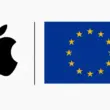At present, we can no longer rely only on traditional education as its approaches are pretty outdated. Advancements in technology have expanded learning beyond physical classrooms. Students can attend online classes, watch video tutorials, read a blog, and access education thoroughly. Today’s learners prioritize personalized experiences that cater to their unique goals, styles, and progress rates.
Educational technology (EdTech) is picking up steam to meet the increasing needs of students and teachers. It offers personalized learning, artificial intelligence, chatbots, virtual assistants, and more to reshape education.
The use of tools and technologies goes beyond the classroom. One great use of EdTech is writing services! For essay websites that offer writing papers for money, team members work collaboratively, rely on the Internet for research purposes, create outlines with AI tools, and collaborate to offer high-quality essay and assignment services.
Among the many EdTech companies, Apple’s approach is prominent in offering digital transformation in education. In this article, we will keep a keen eye on the emerging trends in education and how Apple is blending with this innovative educational technology.
The Evolution of EdTech
The value of the global EdTech market in 2023 was $340 billion, and it’s just the beginning. The market is expected to grow to $605 billion from 2023 to 2027, with an annual growth rate of 15%.
And the largest market share is in North America, accounting for 35% of the global revenue.
The number of educational technologies is skyrocketing. There are an estimated 28 EdTech unicorns globally.
7 EdTech Trends in 2025
Today’s education is not the same as it was decades ago. It is now fueled by technologies that are constantly evolving. It can be challenging to keep up with the latest EdTech trends. Here, we have compiled the latest EdTech trends shaping the world.
Artificial Intelligence
In 2025, Artificial Intelligence (AI) continues to offer a fresh perspective to education by solving the challenges of traditional education methods.
According to Forbes, 60% of educators integrate AI into their teaching.
Personalized learning with Apple technology enables educators to quickly adapt the methods to meet each student’s needs and boost their motivation. AI also saves time and handles routine tasks like creating schedules, plans, and grading tests.
The vast advantage of AI lies in its content generation. It allows you to create tasks, schemes, presentations, and more. Thanks to AI, teachers can design more interactive lessons, making learning interesting for students.
Chatbots and Virtual Assistants
Technology can simplify the workload and help access educational materials. These chatbots offer real-time support and assistance to students. They can rely on them to solve challenges and access information.
A key benefit of these assistants is their 24/7 availability. So, the customers can reach them anytime with questions, challenges, or problems.
Immersive Learning
Immersive learning is yet another powerful EdTech that’s worth considering. It is a digital educational form that simulates real-world scenarios to make training effective and engaging. Various companies like Verizon and Walmart use virtual reality for training.
Under this technology, employees use VR headsets and feel like they’re working, practicing both job and soft skills.
Further, data from virtual reality training also helps companies improve their methods and performance. Studies show that immersive learning helps boost engagement, readiness, and knowledge retention.
Interactive learning
Interactive learning is a concept in education that uses Augmented Reality (AR) and Virtual Reality (VR) to create a realistic experience for students. Here, instead of just watching the videos, you can practice using a machine in a full simulation to see everything from every angle.
This EdTech trend is highly applied in fields like cooking, engineering, and medicine where students must be more hands-on and interactive in their study.
It also helps turn the lessons into virtual trips where learners can actively participate instead of just observers.
Many universities are adopting interactive approaches for more practical classes.
Gamification
Studies show that the educational games market experienced significant growth of $11.5 billion in 2023. By 2032, it is expected to reach $97 billion with an annual growth rate of 40%.
The growth is driven by the preference for personal learning experiences and the game-based education it offers. Gamification offers many advantages. For example, the system of rewards in games can boost the student’s motivation, while challenges can keep them engaged and focused on completing the tasks.
Some successful examples of gamified approaches are Duolingo, Brilliant, and Unacademy.
Apple’s Impact on Online Learning
Apple is one of the most powerful EdTech companies that offers a modern environment. It bridges the gap between the traditional and innovative methods. Apple’s suite of tools is shaping the future of education.
Accessibility for All
Apple’s tools are designed with accessibility in mind. Even students with disabilities can actively participate. Features like VoiceOver, Magnifier, and Live Captions make it simpler for learners to engage with the course materials. It ensures that the opportunities provided to all the students are fair.
Real-Time Collaboration
Apple’s technologies enable seamless collaboration between teachers and students. Whether it’s brainstorming ideas for working on group projects, it ensures connectivity. Further, they can also come together and work on their assignments and projects with its vast, extensive library of apps that supports real-time collaboration.
Professional Development
Apple also invests in teacher training. It offers professional development programs to help teachers integrate the latest technology into their teaching. Programs like Apple Teacher have resources and certification to improve digital literacy.
Furthermore, Apple’s extensive library of third-party educational apps on the App Store supports diverse studying needs.
Conclusion
Educational technology helps students perform better by enhancing their learning experience, offering them better solutions, and ensuring they receive a quality education.
The new teaching module plans to integrate these EdTech technologies to provide students with advanced experience.
While there have been some challenges in implementing these technologies in the approach. Apple’s innovative apps and devices are shaping the future. It offers competitive solutions to students and teachers to help them explore creativity, utilize the applications and tools, and ensure that education is top quality.
Classroom learning with Apple will continuously shape the future of education by updating and introducing innovations that fit the rising needs.









